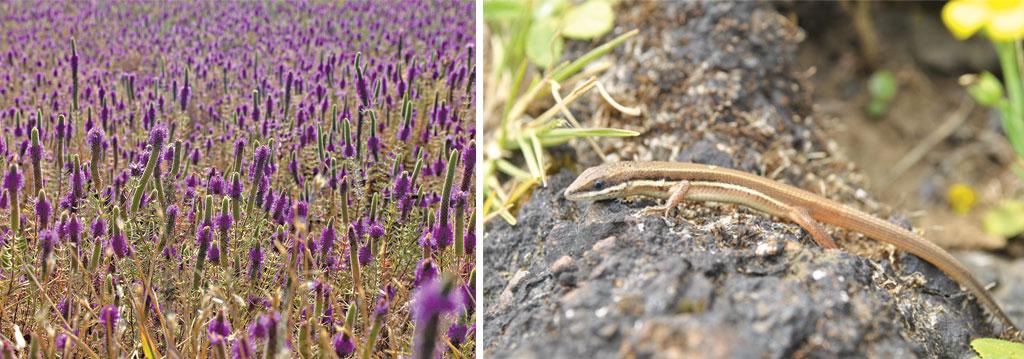For more than 400 years, communities in Chaukul village near Amboli, Maharashtra, have been conserving rocky outcrops — a part of a rock formation that protrudes above the surface of the surrounding land. Usually, rocky outcrops are naturally formed visible exposures of rock with either a thin layer of soil or no soil at all. People in Chaukul protect the rocky outcrops through interesting practices. They don’t allow grazing on outcrops and do not sell the land to outsiders. When it rains, vegetation springs to life on the surface. On the Kaas plateau in the Western Ghats for instance, this leads to mass blooming of several species of flora. Rocky outcrops are formed by weathering that happens at different rates, causing the less weathered rock to remain exposed.

Apart from being home to several endemic plant and animal species, rocky outcrops play a key role in water catchments (Photographs: Aparna Watve)
Perennial springs originating here provide clean drinking water to communities. “Vegetable species like kavla (Smithia sp) and kulai (Chlorophytum sp) as well as some tubers that grow on rocky outcrops are consumed by people,” says Mandar Datar of Agharkar Research Institute (ARI), Pune. Rocky outcrops are also home to several desiccation tolerant plants that wither in the dry period and start photosynthesising when water is available.
Balasubramanian Karthick, a scientist with ARI who has done a study on a rare new freshwater diatom (a group of algae) species found in the Western Ghats, says, “We found that lateritic plateau diatoms are completely different from the stream and river diatoms in terms of their species composition. This confirms that lateritic plateaus house a unique ecosystem.” He adds the species living in rocky outcrops are completely unknown. “We are losing the diatoms before we know what they are.”
The threats rocky outcrops face across India are grave. Take for instance the Mopa Plateau in Goa where there are several perennial springs. “The villages around this plateau benefit greatly from this water, and there is also a sacred grove on the plateau,” says Watve. She adds that this ecosystem will be destroyed if the Greenfield International Airport project at Mopa is built.
Fortunately, some conservation organisations have come to the rescue of the Mopa Plateau. The Federation of Rainbow Warriors, Margao, a Goa-based non-profit, is fighting a legal battle to save the plateau. The Bombay Environmental Action Group (BEAG), a non-profit working on conservation issues, has been fighting a case in the Bombay High Court to protect rocky outcrops in Panchgani, Maharashtra since 2003. BEAG won a case in the high court in 2006 after which shopkeepers were ordered to move out of the plateau. However, this judgment has been challenged in Supreme Court, and the case will be heard in April 2019.
Watve’s organisation, Biome Conservation Foundation has initiated the Rock Outcrop Network (RON), where diverse organisations, researchers, local community members, concerned citizens and lawyers came together to save these unique ecosystems.
This group collated information on 15 high altitude plateaus, which includes endemic and endangered biodiversity, threats, land use, and social and cultural aspects.
RON has focussed its efforts to save the coastal plateaus in Ratnagiri, Maharashtra. “We are taking the help of the Biodiversity Act, 2002, where the gram panchayat can declare Biodiversity Heritage Sites, for areas of ecological and cultural importance,” says Watve.
Experts say the only way to protect rocky outcrops is reclassification of land taking into account the latest understanding of the ecological value of the land. Watve says policymakers must edit the Wastelands Atlas of India to delete areas that are proven habitats for endangered species; have cultural and sustenance values for local communities; and, represent specialised ecosystems.
Source:
https://www.downtoearth.org.in/news/water/rocky-outcrops-an-ecosystem-being-erased-before-it-s-completely-discovered-64009